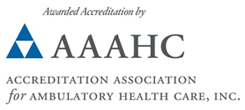Treatment for ulnar tunnel syndrome focuses on relieving nerve pain, reducing inflammation, and preserving hand function. Medications commonly used include NSAIDs for inflammation and neuropathic pain medications to manage nerve-related discomfort. For more targeted relief, ulnar nerve blocks using local anesthetics (with or without
corticosteroids) may be administered at the wrist to reduce pain and confirm the diagnosis. These interventions are especially useful for patients with moderate to severe pain or for those not responding to basic conservative care.
Pain management specialists may also incorporate non-invasive therapies such as TENS (transcutaneous electrical nerve stimulation) or ultrasound therapy to reduce nerve irritation and improve circulation. Physical and occupational therapy with a focus on nerve gliding exercises and ergonomic education is often included to enhance mobility and minimize further compression. In some cases, when conservative and interventional strategies are not enough, pain specialists coordinate with hand surgeons to evaluate for surgical decompression. The overall goal is to reduce pain, improve quality of life, and prevent permanent nerve damage.







